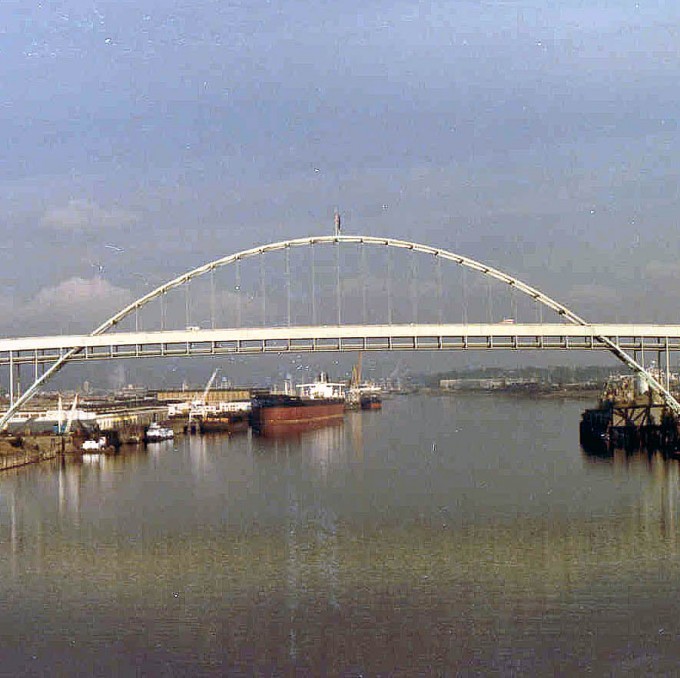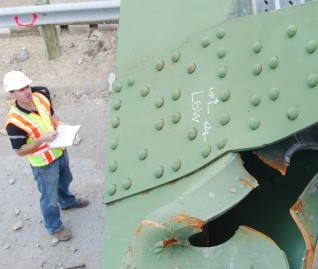WJE PROJECTS
Fremont Bridge over the Willamette River


CLIENT |
Oregon Department of Transportation |
LOCATION |
Portland, OR |
Fatigue and Fracture Study
As part of ongoing maintenance of the Fremont Bridge, the Oregon Department of Transportation retained WJE to conduct a comprehensive fatigue and fracture study of the three-span main arch and associated approach spans.
BACKGROUND
The Fremont Bridge is a three-span, stiffened steel arch bridge crossing the Willamette River, having a total length of 2,159 feet. The arch is designed to act in compression, and the tie girder acts in tension to counteract the thrust of the arch as well as in flexure to resist live-load bending moments. The main span consists of twenty-eight panels at 44 feet, 10 inches each for a total length of 1,255 feet 4 inches. The side spans consist of 10 panels at 44 feet, 10 inches each for a total of 448 feet, 4 inches.
SOLUTION
WJE engineers conducted a fatigue and fracture study of the tied arch structure. The primary objectives included an arm's-length, in-depth inspection of all fatigue sensitive details in the tie girders, a detailed inspection of the lower deck framing members, ultrasonic testing of bearing pins and hanger links and approach ramp hanger pins, magnetic particle testing of selected areas, fractographic examination, measurement of the existing load in the suspender cables, visual inspection of all approach roadway pot bearings, and an assessment of retrofitted conditions.
WJE engineers inspected approximately 8,300 Category E and E' details in the interior of the two box-shaped tie girders and examined over four hundred locations on the tie girder exteriors. To accomplish the inspection, weld termination areas were wire brushed or cleaned with a solvent, and crack-like indications were lightly ground using electric dye-grinders. To assess the condition of the weld toe, WJE engineers removed paint, weld splatter, weld overlap, or undercutting. Category E and E' details in the tie girders were NDT tested and any shown to be cracked were ground to remove the defect or a sample was cored for fractographic examination. The study included testing 329 approach span hanger pins for cracking or defects.
RELATED INFORMATION
-
 Our knowledge of bridge performance is supported by technical expertise in structural... MORE >Services | Bridge Engineering
Our knowledge of bridge performance is supported by technical expertise in structural... MORE >Services | Bridge Engineering -
 We have pioneered the use of nondestructive evaluation methods—such as ground penetrating... MORE >Services | Nondestructive Evaluation
We have pioneered the use of nondestructive evaluation methods—such as ground penetrating... MORE >Services | Nondestructive Evaluation -
 When the integrity or condition of a structure is in question, clients rely on us for answers MORE >Services | Structural Engineering
When the integrity or condition of a structure is in question, clients rely on us for answers MORE >Services | Structural Engineering




































